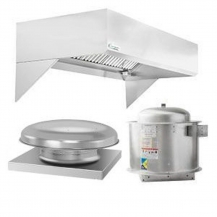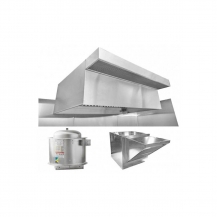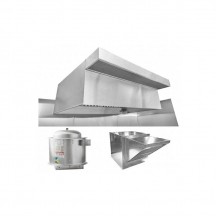Restaurant Hood Systems
-
$3,112.83FINANCE FOR: $75.99/mo.
-
$4,641.04FINANCE FOR: $113.30/mo.
-
$6,753.86FINANCE FOR: $164.88/mo.
-
$2,767.18FINANCE FOR: $67.56/mo.
-
$3,246.16FINANCE FOR: $79.25/mo.
-
$5,235.90FINANCE FOR: $127.82/mo.
-
$9,071.80FINANCE FOR: $221.47/mo.
-
$4,158.99FINANCE FOR: $101.53/mo.
-
$4,641.04FINANCE FOR: $113.30/mo.
-
$3,984.63FINANCE FOR: $97.28/mo.
-
$9,071.80FINANCE FOR: $221.47/mo.
-
$7,717.96FINANCE FOR: $188.42/mo.
-
$5,898.46FINANCE FOR: $144.00/mo.
-
$5,235.90FINANCE FOR: $127.82/mo.
-
$4,410.26FINANCE FOR: $107.67/mo.
-
$4,158.99FINANCE FOR: $101.53/mo.
-
$3,507.70FINANCE FOR: $85.63/mo.
-
$3,984.63FINANCE FOR: $97.28/mo.
-
$5,650.25FINANCE FOR: $137.94/mo.
-
$3,391.80FINANCE FOR: $82.80/mo.
-
$3,507.70FINANCE FOR: $85.63/mo.
-
$3,681.03FINANCE FOR: $89.86/mo.
-
$4,071.80FINANCE FOR: $99.40/mo.
-
$8,066.67FINANCE FOR: $196.93/mo.
-
$4,410.26FINANCE FOR: $107.67/mo.
-
$6,682.06FINANCE FOR: $163.13/mo.
-
$7,010.27FINANCE FOR: $171.14/mo.
-
$7,717.96FINANCE FOR: $188.42/mo.
-
$5,030.78FINANCE FOR: $122.82/mo.
-
$6,753.86FINANCE FOR: $164.88/mo.
-
$7,477.94FINANCE FOR: $182.56/mo.
-
$8,066.67FINANCE FOR: $196.93/mo.
Restaurant Hood Systems Improve the Air Quality in Your Facility
Any restaurant hood system aims to collect grease, smoke, or other cooking vapors and filter all the harmful contaminants. A restaurant kitchen is replete with ovens, stoves, and ranges for heating and cooking. Water boiling or food frying in pots and pans on heating equipment generate vapor. Plus, the cleaning tasks and foot traffic in a restaurant kitchen create patches of dust in the air. All this dust, vapor, grease, and smoke must be extracted and released outside through fans and filters before condensing on walls and ceilings.
Why are Restaurant Hood Systems Important?
First and foremost, it's a requirement. Food safety and prevention of foodborne illnesses are the top priority in many local and national regulations. Restaurant hood systems are an essential component of food safety. FDA requires commercial food service establishments to have sufficient restaurant hood ventilation systems, including parts like hoods, fans, filters, guards, and ducting. Lack of proper ventilation means dripping of grease or dirty moisture on food, paving the way for food contamination.
For FDA, equipment, utensils, and food contact surfaces with drips of vapor are no longer safe to use. Accumulation of moisture, grease, and dust on walls, floors, and ceilings results in unsanitary conditions. Experienced restaurant operators know how this can harm the walls of their facility. Besides damage to food and surfaces, grease condensation can also spark fires. Therefore, FDA calls for regular inspections to ensure that grease, smoke, steam, or other soil are vented out through kitchen exhaust hoods to prevent pileup on surfaces.
Restaurant hood systems also provide a safer working environment for your employees and a more pleasant dining experience for your customers. Restaurant kitchen hood systems above heating equipment attract polluted air and replace it with clean air from outside, balancing the air inside your facility. If this replacement doesn't happen, the hood starts pulling air from any opening like drainage pipes. The result is foul odors, excess smoke, and dirt, interfering with the joy of your diners.
When purchasing a restaurant hood system, it is crucial to accurately calculate your unique kitchen needs and space limitations. An incorrect match or improper installation brings about poor performance and waste of energy. You have an expensive hunk of metal making only noise. Depending on the structure and size of your facility, the cooking volume, and the number and location of your heating equipment, you can choose the type of restaurant kitchen hood system you need.
Short Cycle Makeup Air Hood Systems are Type I hoods. They remove the grease and vapors emitted from cookers, and often need an additional tempered air unit for fresh air intake and circulation. In short cycle hoods, a fresh air makeup fan allows the outside air directly to the center of the hood. Short Cycle Makeup Air Hood Systems are less costly to install and run since they eliminate the need to temper the air. Besides, they do this without affecting the ambient temperatures.
Keeping Your Restaurant Hood Systems Clean
Kitchen hoods are composed of vent hoods, exhaust fans, and filters connected to ductwork. Filters collect dirt particles and all the heat, vapors, and grease flow outside through ducts. For a code-compliant operation of restaurant hood systems, you need to clean these sources of contamination regularly. FDA also mandates keeping the duct outlets sanitary to prevent pest attraction.
































